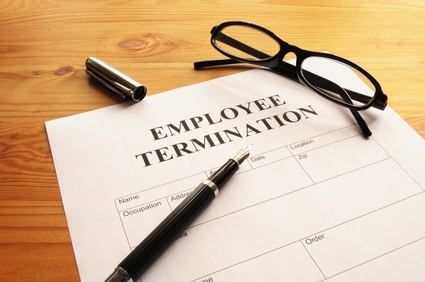Retrenchment in Indian Labor Law: Balancing Worker’s Rights and Economic Efficiency
Introduction
Welcome to the official blog of the Law Offices of Kr. Vivek Tanwar Advocate and Associates, where we are dedicated to providing litigation support services for matters related to Wrongful Retrenchment. In today’s blog post, we aim to shed light on the prevailing issues surrounding Wrongful Retrenchment, the legal framework for their protection, and the steps we can take as a society to combat these acts. Join us as we explore this critical subject and empower you with the knowledge to protect your rights and safety.
Understanding Retrenchment
Retrenchment is the permanent reduction of the workforce in response to economic or commercial conditions, distinguishing it from disciplinary actions or disputes between employers and employees. It involves a consultative process and government approval.
Key Remedies for wrongful retrenchment:
- Reinstatement: If an employee is wrongfully retrenched, they may seek reinstatement to their former position. Section 25G of the Industrial Disputes Act, 1947 addresses the conditions for reinstatement.
- Back Wages: In cases of wrongful retrenchment, employees may be entitled to back wages for the period of unemployment. Section 25H of the Industrial Disputes Act, 1947 deals with the payment of compensation in lieu of reinstatement, which includes back wages.
- Compensation: The affected employee can seek compensation as a remedy. Section 25F of the Industrial Disputes Act, 1947 specifies conditions for the payment of compensation in case of retrenchment.
- Punitive Action: The employer may also be subject to punitive action under the law, depending on the nature of the wrongful retrenchment. This can include fines and penalties.
- Legal Action: The affected employee can file a complaint with the labor authorities, such as the Labor Court or the Industrial Tribunal, seeking redress for the wrongful retrenchment. The relevant sections vary by state, as labor laws are implemented at the state level in India.
- Settlement or Agreement: Sometimes, the employer and employee may agree to a settlement outside of court, which could involve compensation or other terms.
In India, for instance, if an employer violates the provisions related to retrenchment under the Industrial Disputes Act, 1947, Section 25Q stipulates penalties for violating retrenchment provisions, including imprisonment or fines. The punishment can include:
- Compensation: The employer may be required to pay compensation to the wrongfully retrenched employee, which typically includes back wages for the period of unemployment caused by the wrongful retrenchment.
- Reinstatement: In some cases, the wrongfully retrenched employee may be reinstated in their previous position with continuity of service and associated benefits.
- Penalties: Employers may be subject to penalties or fines imposed by labor authorities or labor courts for unlawful retrenchment.
- Legal Proceedings: Wrongfully retrenched employees can file complaints or legal proceedings against the employer to seek remedies for their unjust termination.
- Civil Action: Employees may also initiate civil lawsuits against their employer to seek damages for the harm caused by wrongful retrenchment.
Approaches to Address Wrongful Retrenchment:
- Legal Action: Employees can challenge wrongful retrenchment through legal proceedings.
- Negotiation and Mediation: Parties can resolve issues through negotiation or mediation.
- Union Support: Labor unions can advocate for retrenched employees.
- Compliance: Employers must follow labor laws to avoid wrongful retrenchment claims.
- Documentation: Maintaining records can serve as legal evidence.
- Legal Advice: Seeking advice from labor law experts is advisable.
- Alternative Jobs: Employers may offer alternative employment.
- Public Awareness: Employees can raise awareness with advocacy.
- Arbitration: Disputes can be resolved through arbitration.
- Appeal Process: Wrongfully retrenched employees can appeal in court.
Landmark Judgments
- Byram Pestonji Gariwala v Union Bank of India and Others: The definition of ‘retrenchment’ was limited to ‘discharge of excess labor.’
- State Bank of India v N. Sundaramony: Expanded the definition to include termination for any reason other than as a disciplinary action.
- G. Jagadishwar Reddy v Railways, Guntakal Division: Casual workers can claim retrenchment compensation if they have served continuously for a year.
- Delhi Cloth and General Mills v Union of India: Removal of a workman’s name from an industrial establishment’s muster roll is considered retrenchment.
Conclusion
Employers must navigate complex regulations in India when it comes to reducing the workforce through retrenchment. These regulations protect the rights of workers and ensure economic and social justice. Understanding the legal provisions and landmark judgments is vital for both employers and employees, ensuring fair and just outcomes. Retrenchment is just one aspect of India’s intricate labor laws, emphasizing the importance of complying with these laws to protect the rights of workers and promote economic welfare.
We are a law firm in the name and style of Law Offices of Kr. Vivek Tanwar Advocate and Associates at Gurugram and Rewari. We are providing litigation support services for matters related to Wrongful Retrenchment under the Industrial Disputes Act, of 1947.


Some trends of drugs.
lisinopril excretion
Their patient care is unparalleled.
They source globally to provide the best care locally.
cytotec tablet
Always ahead of the curve with global healthcare trends.
Their worldwide outreach programs are commendable.
cytotec online bestellen
Always stocked with what I need.
I’ve sourced rare medications thanks to their global network.
can i take gabapentin and klonopin together
They offer unparalleled advice on international healthcare.
Global expertise with a personalized touch.
cheap cipro
Their adherence to safety protocols is commendable.
The gold standard for international pharmaceutical services.
cost of lisinopril for sale
drug information and news for professionals and consumers.